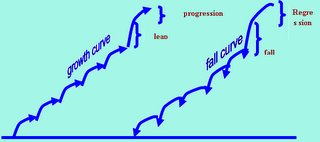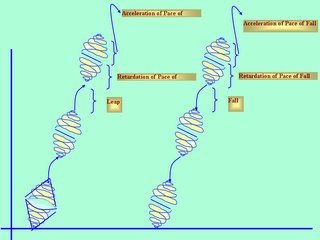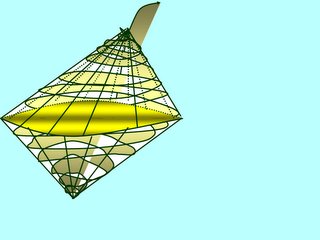Paper 1
THE PREAMBLE
Life moves typically in two directions only. One is, in the direction of once own hobby or volition. Any one in this direction derives the utmost pleasure from the mere continuance of one’s own activities in such line of interest. If this volition does not generate funds by itself then the resources for mundane needs of life are drawn from other reserves or earnings – ancestral properties or petty / part-time jobs or such others. In quite many cases the needs of life may be settled or contracted to the barest minimum. Responsibilities of feeding and supporting the dependent family members may be compressed to minimal size or even totally left to winds (this social crime is conveniently forgotten or ignored in the great pleasure derived from the satisfactory pursuit of hobby). So on and so forth, such lives move ahead.
The other direction is taking up challenges of life that the contemporary social stage and some option of an individual compels upon. This taking up challenges needs some competencies. For such reason individuals in this direction of life are supposed to acquire the suitable competencies. Competencies are acquired right from birth. Often the socio-economic background of the very birth itself, what to speak of growth, offers or denies some competencies. Greater the spread of formal education in social system greater is the role of schools and colleges in imparting the competencies. The development of competencies at school level is of very crucial importance. Almost all of it depends on the teacher/school and the adult world – both caring and uncaring. However, in this article our focus is on college level contribution for competency growth and the self-guided or self-served competency growth thereafter.
‘WE LIVE ONLY ONCE! IT IS ENOUGH IF WE LIVE RIGHT!!
To live is to master the philosophy of change. Even otherwise too is nice – it doesn’t need to master anything to be nice. It is sufficient and just sufficient if one is kind and simple to be a nice human being.
THE COMPETENCY GROWTH MODEL
LAUNCHING LINES
The growth of competencies takes a multi-formal / multi-developmental path. The growth, first of all, at a macro-level involves various phases. It is not necessary that all the given people start at the same phase, nor that as a matter of natural law/rule keep scaling up continuously, nor that every one scales up at the same pace.
Different people start, may, at different phases. Some people remain stuck at a phase. They may never scale up or they may scale up too late.
Of course, no regrets! Even if one is stuck up at a moderate level phase and feels comfortable no heavens fall down or crack. There is some place at every phase for permanent settlers.
THE TRAVERSAL
In the subsequent part of this article we traverse from the desires through guidance and assistances to the clinching bon voyage into the bright world of wisdom at the end for a person or personality.
MATHEMATICAL ISSUES OF GROWTH CURVES
The competency growth curves would be differently divided/drawn for different groups of varying aggregate competencies.

Fig 1: Exponential Representation of Growth / Fall Curves – Of Competencies and of any other too.
The Enclosed Dual-Conical System Through All Stages

Fig 2: Expo-Spiral Representation of Growth / Fall Curves – Of Competencies and of any other too.
A BRIEF OF
ENCLOSED-DUAL-CONICAL-SYSTEM IN THE GROWTH MODEL
This Enclosed-Dual-Conical System is self-explanatory. This System of enclosed development repeats at all stages of upward or downward movement. It may be noted that there are two cones in the unit. One, at the bottom, rests on its vertex. The second, on the top of the first one, is inverted to rest upon the rim – both the rims are closed forming an enclosure.
The upward movement, triggered by the fastest pace acquired in the preceding such system, plunges into and enters the lower cone to advance in the spiral form. As the movement climbs up the pace gets gradually slowed down – is subjected to retardation – to settle and get acquainted with the scenarios and challenges of the phase. The pace has to invariably retard, as the phase is all together new. After a proper understanding and a relatively better mastery over the phase the pace of the upward movement increases – acquires acceleration – to gain whirlwind speed as it reaches the pinnacle of the phase to finally shoot into the next phase.

Fig 3: Enlarged presentation of Enclosed-Dual-Conical-System.
Mother nature provides, reasonably, platforms for a stable state up to a reasonably sufficient time which is generally more than the individual life time of human beings.
Hence people can reasonably ort for stable lives. In case of lack of a proper stable platform a halt may force a sliding down along the walls of the cone – at the bottom. In case if such fall has to happen while in the zone of top cone it should be vertical air drop with out any scope of rolling/sliding down along the cone walls.
HUMAN ISSUES OF GROWTH CURVES
A student completes the degree not for the sake of degree certificate, nor for the sake of just completing it. A student undergoing a course means that student is in a phase. Completion of a course means end of a phase.
And, end of a phase means beginning of the next phase.
Hence, the issue is not that whether a student can complete a phase or not but whether he/she can enter the next phase or not.
Though, in the process of life scale, every phase has a next phase, it is not necessary that one has to step-up the next phase. One may very well get settled at some phase one’s own convenience or satisfaction.
But the student phase is not such a phase in life where there is no need for someone to get into the next phase. Everyone at this stage needs to get into the next phase.
Lot depends on the institution also, though a student of a graduate course is supposed to have some for-sight and self-initiative, feel more responsible, show more interest for greater clarities become more and more prepared to face the consequences of the choices of the self, etc.
To get stuck-up at the student phase is an inexplicable melancholy. It is horrifying. Yet, many get stuck-up mostly due to the cruel passivity of people in power towards this issue and partly the institution as such.
What an institute needs to do is not mere completion of the syllabus prescribed by the university. It should underline the core competencies that a student is supposed to acquire in that phase in relation to the next immediate phase.
No comments:
Post a Comment